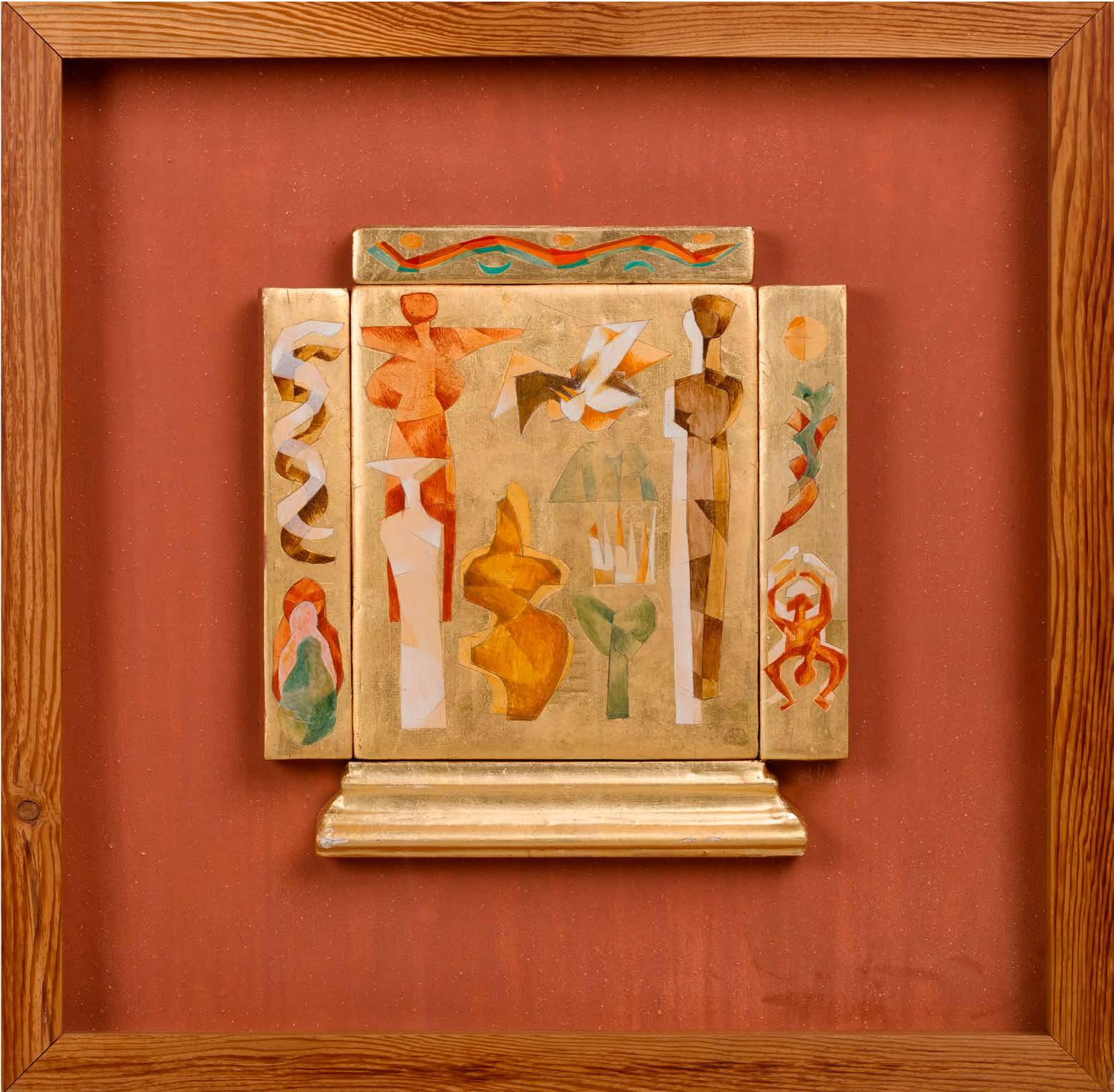
12 minute read
The Spirit of the North Lucy Belle Tesoriero
North Queensland exudes an energy unlike anywhere else in Australia. This is a difficult essence to pinpoint; an enigmatic and all-embracing aura reflective of climate and environment. This energy has engendered an authenticity of artistic expression amongst local artists, whose work reflects a sense of loyalty and identity to their environment, community, heritage, and future. Utopia Tropicae: The Spirit of the North seeks to celebrate these artists, who reside in, or who have a strong connection to Townsville, Cairns, and the wider North Queensland region, and who have made an enduring commitment towards the area’s visual arts and cultural conversation.
When I recently moved to Townsville from ‘the big smoke’ of Sydney six months ago, I was overwhelmed by the calibre of talent that seems (to an outsider like myself) to be hiding in this region. When an artist works out of a big city such as Sydney or Melbourne, there is a perception that one only needs to know who’s who and who to talk to in order to be successful. The talent does not necessarily need to be there. Controversial I know, but it really is true, and is clearly illustrated when travelling to regional city communities such as Townsville. I found that artists in areas such as these are not so much concerned with being famous or ‘making it’ in the art world, but instead put their focus into developing their skill and encouraging fellow artists. The talent here is exceptional and is infused with an honest passion and a strong sense of identity.
North Queensland evokes an idyllic image of a tropical paradise. A diverse landscape edged by a world-famous reef, tipped by a scatter of islands, centred by mountains, trickled with rainforest, and locked in by an expansive red terrain. They say it is where the outback meets the sea. This unique backdrop has not only been a popular escape for travellers throughout history, but also a stimulating setting for artists.
Aaron Meeks Mabo 2018
Acrylic on canvas
183 x 61 cm Courtesy of the Artist
Aaron Meeks Bloodline 2018 Acrylic on canvas
170 x 60 cm Courtesy of the Artist
As Ross Searle describes in his exhibition publication Artist in the Tropics, ‘Professional activity in Queensland was stimulated in the 1880s by the demand for illustrators in newspapers and journals [and] the need for draughtsman to work in the booming building trade.’ 1 One of the first professionally trained artists to set up in Townsville was Evan Bevan in the late 1870s. Bevan was an art student, painter, surveyor, author and editor. Others soon joined, such as Charles Allen, Julian Ashton, Walter Jenner, Winifred Rumney, and J. Findlay McFadyen.2 It was common for artists trained in England or in Europe to travel to the region to experience the exotic wilderness and wild natural scenery described in letters, travellers’ journals and press reports.3
Between the late 1800s and early 1900s, more and more visitors were pursuing the illusive romanticism of the ‘other’- the ‘other’ referring to a distant locale far from the realities of daily life. Curator Gavin Wilson refers to these explorers as ‘escape artists’.4 North Queensland was a popular location for such runaways as it fit the ideal exotic image and romantic lifestyle. North Queensland represented a freedom; a freedom to explore, a freedom to expand on their work and their lives, a freedom which allowed artistic stimulation and creativity in a place where time did not tick.
From the 1920s to the end of the Second World War, many Australian and European artists joined the ranks of traveller/ settler artists in this region. These artists included such names as Donald Friend, Tom Roberts, Arthur Streeton, Margaret Preston, Russell Drysdale, Sidney Nolan, Valerie Albiston, Yvonne Cohen, and Ray Crooke.5 These artists found the secluded North Queensland environment to be much more accepting of their desire to embrace the movements of modern art at the time, allowing them to explore abstract influences without restrictions. They no longer felt the pressure to mimic nature in their art, but were free to capture and portray the energy of their surroundings.6

The following journal entry from Donald Friend perfectly illustrates the alluring ideals of the North which artists such as himself were attracted to-
29 August 1954, Cairns
… Now the days are clear and cloudless, but in the steamy air the sun’s brilliant light does not, as in the south, bleach the colour of the earth and leaves, they retain their heavy lush colours. The landscape resolves itself with swathes of shimmering primary coloursgreat areas of cadmium yellow, slithering greens, hues of purple, pink, heliotrope and blue. The forms of mountains and of forests and fields consisted of decorative patterns of a curious regularity. The strange design of large leaves are big enough to register in the general scene, as though a tapestry or a carpet.7
The 1960s saw Townsville transform into an industrial hub thanks to economic expansion and an influx in population and employment opportunities. The establishment of the Townsville University College (later becoming James Cook University) saw many educated and cultured people relocate to Townsville and the wider North Queensland region to be close to this new centre. In 1962, a group of residents ‘well versed in the visual and creative arts’ formed the Townsville Art Society, and became the main lobbying body for visual arts infrastructure for the region.8 One of the Society’s members, Ron Kenny, president of the Society for eleven years, was particularly remarkable in the push to put Townsville on the visual arts map, and identified the need for both commercial galleries and a regional institution.9
In 1972 pharmacist Ralph Martin opened the Martin Gallery, allowing artists and the local community access to this increasingly popular visual culture, and included various styles and trends such as modernism, international and local arts practices, indigenous art, as well as arts and crafts.10 Local artist Anneke Silver explains that Martin Gallery made ‘these movements visible to those who were not subscribed to one of the few art magazines such as Art and Australia, the Martin Gallery was the perfect venue—the internet had not yet exploded into being everyone’s encyclopaedia.’ 11 Martin Gallery brought the artist community together and galvanised the bond between each of them.
With interest in the visual arts continuing to flourish due to the likes of Martin Gallery and the Townsville Art Society, more and more artists were moving to Townsville to involve themselves in this scene, and, in 1975, the first Arts course was established at Townsville’s TAFE. Down the line many graduates of this course went full circle, not only going on to teach at the TAFE, but also to exhibit at the Martin Gallery. The Townsville art scene advanced again as a result of the employment of TAFE lecturers who were also practising artists and professionals within their visual arts field. Artists such as Robert Preston, Jim Cox, James Brown, and Margaret Wilson were all employed at the local TAFE.12 Many others joined once the course became a fulltime diploma, and experts in the ever-expanding range of subjects came on board such as ceramicist Ray Harrison, printmakers such as Ron McBurnie, Anne Lord, and sculptor Jane Hawkins.13 Martin Gallery continued to show Townsville artists and the variety of media was very helpful to the various disciplines springing up at the college, an experience that was extended further when the Perc Tucker Regional Gallery opened in 1981.14 Five years after the establishment of Perc Tucker, a group of emerging Townsville artists opened the artist-run initiative Umbrella Studio, which quickly grew in size and scope, becoming the first contemporary arts organisation north of Brisbane, and a long-term champion of North Queensland visual art.
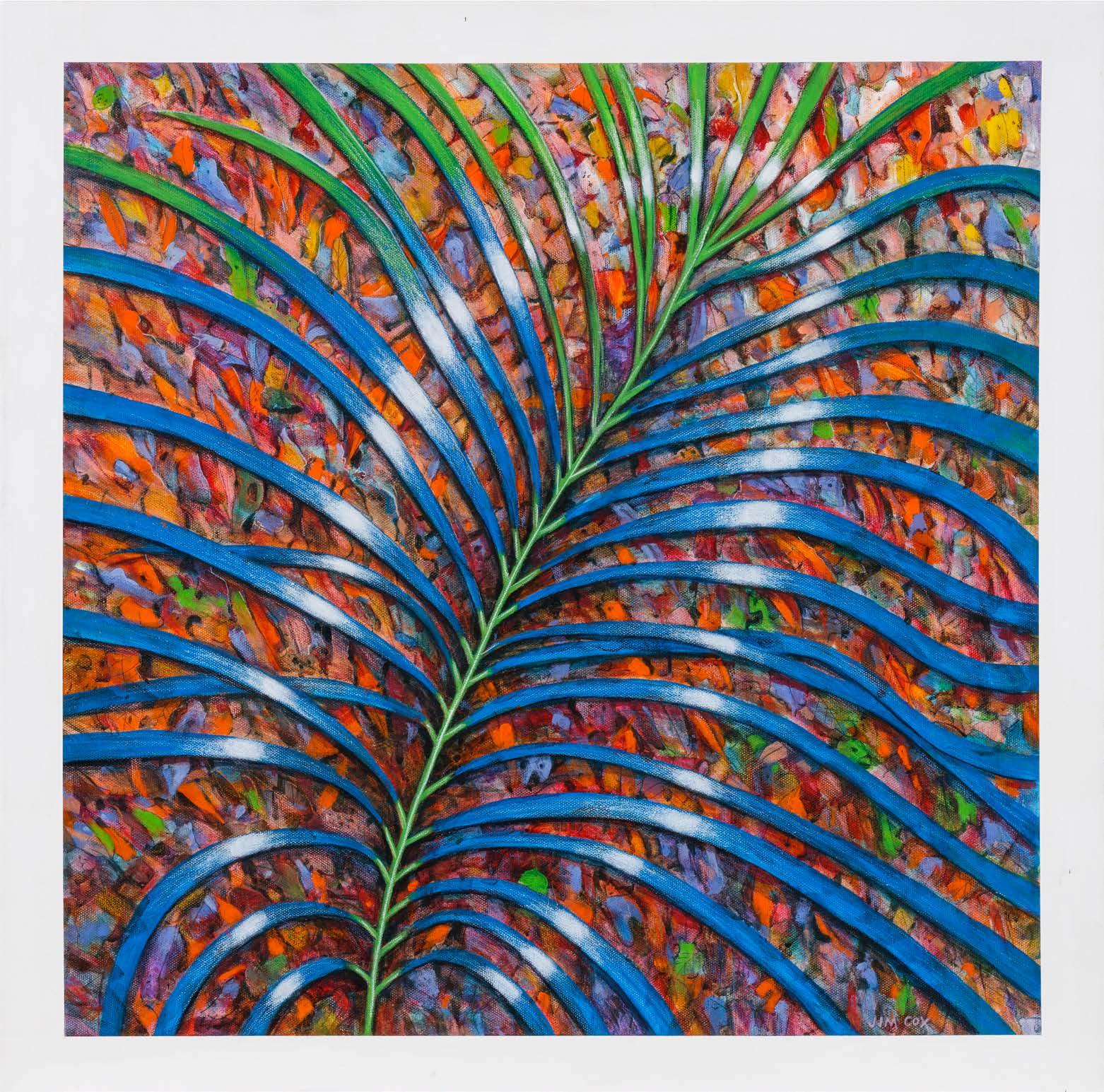
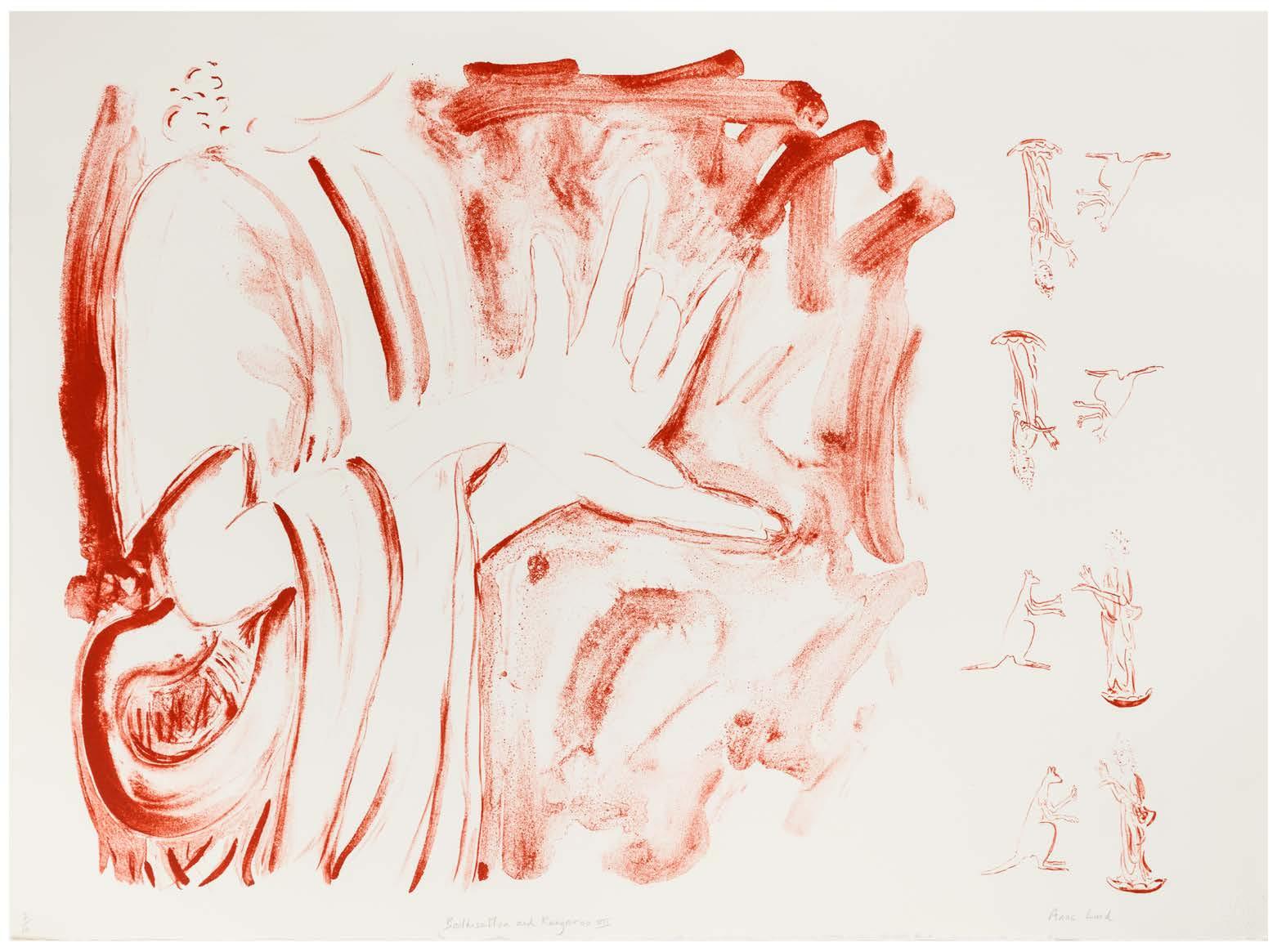
There have been many exhibitions and accompanying texts examining our Northern region and analysing the work of the aforementioned artists. The texts that were most influential to me in curating this exhibition include Art in North Queensland: Selected Works from the Cairns City Collection, Cairns Art Society, 1987; Out of the North: North Queensland Ceramics, North Queensland Potters Association, 1989; Artist in The Tropics: 200 Years in North Queensland, Perc Tucker Regional Gallery, 1991; Escape Artists: Modernists in the Tropics, Cairns Regional Gallery, 1998; Beneath the Monsoon: Visions of Capricorn, Artspace Mackay, 2003; To the Islands, Perc Tucker Regional Gallery, 2013; Thirty Years of Umbrella: 1986-2016, Umbrella Studio Contemporary Arts, 2017; and The Martin Gallery, Perc Tucker Regional Gallery, 2016.
Each of these are incredibly informative tools in understanding the creative history of the region, and for a newly appointment curator to this area like myself, have been exceptionally valuable. You may ask why Jonathan McBurnie and I decided to approach this theme again. These previous exhibitions were mostly historical and analytically research-based examinations, and both Jonathan and I wanted to curate a show that was more of a celebration than an study; an exhibition that showcased the energy and aura felt in this region, represented by artists who did not just temporarily ‘escape’ to the North, but of those who made this region home.
Jonathan, being a Townsville local, encouraged me to research and seek out artists for this show, many whom I was able to visit in person. This has allowed me to familiarise myself with the area and the local Arts community. The artists chosen for Utopia Tropicae include both long-time resident stalwarts of the North Queensland arts community, as well as emerging artists representing the ever-developing Arts scene. This choice I hope, offers a broad example of the talent of the region and can illustrate that North Queensland is no longer just a tourism destination, but a cultural community shining with vitality and inspiration. At first glance, the choice of artworks may seem odd, but once you explore the exhibition in its entirety you will see the ties. There is the overarching theme of location and the landscape of tropical North Queensland, but what stands out is the perception of the cultural landscape; the link to who we are as a community. We see themes of birthplace, ancestry and identity, romanticism, religion, mysticism and iconography. We see the relationship between humans and nature, and some Australiana thrown in for good fun. Every artist holds a different history and each offers their own story, but they all have the commonality of living in the tropical utopia that is North Queensland.
Endnotes
1 Searle, Ross. Artist in the Tropics: 200 Years of Art in North Queensland. Perc Tucker Regional Gallery, Townsville, 1991, 19-20
2 Ibid
3 Searle. Op. cit., 21
4 Friend, Donald, 29 August 1954, Cairns, unpublished diaries, National Library of Australia, Canberra, 1943-1956 in Wilson, Gavin. Escape Artists: Modernists in the Tropics, Cairns Regional Gallery, Cairns, 1998, 12
5 Searle. Op. cit., 42
6 Searle. Op. cit., 37
7 Wilson. Op.cit., 104
8 Silver, Anneke. Memories of a Genesis in Fitzgerald, Shane; Martin, Ralph; Silver Anneke. Images of an Era: The Martin Gallery. Perc Tucker Regional Gallery, Townsville City Council, Townsville, 2016, 19
9 Silver. Op. cit., 20-24
10 Silver. Op. cit., 39
11 Silver. Op. cit., 28
12 Silver. Op. cit., 47
13 Searle. Op. cit., 55
14 Silver. Op. cit., 47
Lithograph
Tate Adams
b. 1922, Holywood, County Down, Ireland d. 2018, Townsville, Queensland
Tate Adams taught himself wood engraving during his service in World War II, while illustrating for a military newspaper. After studying engraving at the London’s Central School of Arts, Adams emigrated to Australia. In 1966, the artist established the Crossley Gallery, at the time the only commercial gallery in Australia dedicated to printmaking. Soon, Adams created the Crossley Workshop, and later the Lyre Bird Press, with a former student, the mercurial printmaker George Baldessin. The Lyre Bird Press would go on to publish many artist books over the decades. Adams relocated to Townsville in 1989, and Lyre Bird Press became an artistic cornerstone of North Queensland when it was relocated to James Cook University in 1992, bringing about a reinvigoration of the press, owing to the support of the university, a productive partnership with Ron McBurnie, as well as the enthusiasm of Townsville’s alreadythriving printmaking scene. This period saw the production of some of the press’ finest artist books, notably the Palmetum book, which collected the work of some of the most influential printmakers of Australia, each responding to Townsville’s unique landmark. Adams died in 2018 only months after what would be his final exhibition at Sylvia Ditchburn Gallery.

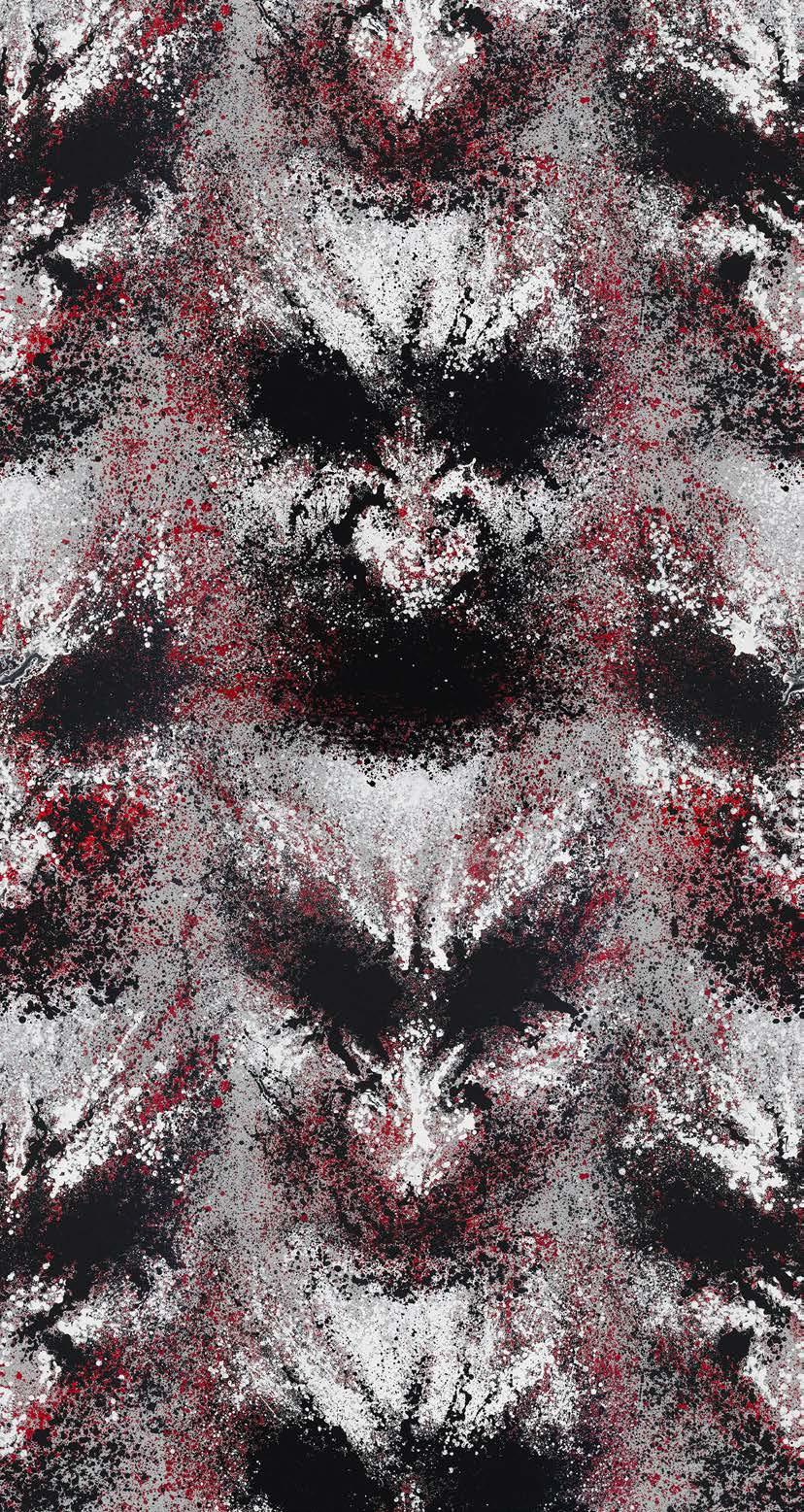
Vernon Ah Kee
b. 1967, Innisfail, North Queensland of the Yidindji, Kuku Yalandji, Waanji, Koko Berrin and Gugu Yimithirr peoples
Vernon Ah Kee was born in 1967 in Innisfail, Queensland, of the Yidindji, Kuku Yalandji, Waanji, Koko Berrin and Gugu Yimithirr peoples. A founding member of the Aboriginal artist collective proppaNOW, and the recipient of multiple awards, Vernon Ah Kee is a prolific and highly respected international artist. His work is diverse and his artistic practice includes photography, painting, video, and installation. In Ah Kee’s early work, he reclaimed Indigenous portraiture through hyper realistic depictions of historical photographs. His highly political motivations have been expressed though his use of text and language, informed by war propaganda posters and advertising imagery. Both Gordon Hookey’s work Wallaroo (2015) and Vernon Ah Kee’s Brutalities (2015) were commissioned by Cairns Regional Gallery in 2015 for the exhibition Out of Queensland: New Indigenous Textiles, presented in partnership with the Cairns Indigenous Art Fair. The exhibition’s aim was to exemplify the fusion of digital technology and Aboriginal and Torres Strait Islander contemporary art practice. Working in collaboration with textile designer Bobbie Ruben, nine established and emerging artists manipulated images from their existing artworks to create repeat patterns for direct-to-fabric digital printing on lengths of fabric. Featuring strong colour and design, the works together made a collective creative statement while celebrating individual artists’ signature styles.
Brutalities 2015
Custom-printed linen
653 x 140 cm
Commissioned by Cairns Regional Gallery 2015 Cairns Regional Art Gallery Collection
Tony Albert
b. 1981, Townsville, Queensland of the Girramay, Yidinyji, Kuku Yalanji peoples
Tony Albert is well-known for his use of kitsch ‘aboriginalia’ in his work, often combining found and gifted objects, photography and painting into mixed media installation. His choice of subject matter is used to challenge the idea what constitutes or what should be considered Aboriginal Art. However, Albert’s wry critical eye subverts history and popular culture in equal measure; in the case of No Place II (2010) (an early, even prototypical work in the series) Albert dresses his subjects in Mexican Lucho Libre wrestling masks. Later work in the series became more pointedly defiant, with body paint and shields reflecting traditional totemic designs, his family again become warriors protecting their paradise home. Albert is currently being exhibited in the Queensland Art Gallery, and is a part of several nationally-touring exhibitions including the Australian War Memorial’s For Country For Nation, which Perc Tucker Regional Gallery will host in 2019.


Vincent Bray
b. 1939, Mount Louisa, North Queensland
Vincent Bray was born in 1939 and raised in Bushy Park Station, Duchess, 20 kilometres south-west of Mt Isa. He worked in the Mt Isa mines for thirty-five years, and while Bray now resides in Townsville, it is his past work in the mines of Mt Isa that continues to influence his unique vision of North Queensland. The North-Western Queensland landscape is seen throughout most of his work, which has a deceptive simplicity, illustrated through printmaking, evoking a strong sense of place through the artist’s visual dynamism. His work A Chronicle (2018) is his largest work to date. The triptych measures over three meters in length, and tells the story of the development of the Mt Isa landscape, from the natural site, the establishment of civilisation, to industrial trade in full force.
Vincent Bray
A Chronicle [detail] 2018
Perspex relief on paper
3 parts, 106.5 x 76.5 cm (sheet), 101 x 52.5 cm (image);
112 x 76.5 cm (sheet), 85.5 x 52.5cm (image);
106.5 x 76.5 cm (sheet), 102 x 52.5 cm (image)
Courtesy of the Artist
James Brown
b. 1953, Townsville, Queensland
Born in Townsville, James Brown completed both his Master of Creative Arts and his PhD at James Cook University, taught Visual Arts at TAFE from 1978, and has continued working in this capacity until his recent retirement. Brown works in many mediums, including drawing, printmaking, and sculpture, but is particularly noted for his devastating proficiency with paint. Brown’s practice can be framed as a deep and sustained investigation into landscape, the North Queensland environment forming a veritable cornucopia of sites of inspiration and engagement. In his recent work Magnetic Island: Referencing Arthur Streeton (2009), Brown reimagines Streeton’s Moonlight, Magnetic Island (1924). Similar in interpretation and colour palette to the original, Brown’s diptych reinterprets the sense of place and romantic allusions of the original, including Streeton’s evocative moon, which Brown notes is impossibly placed for its visual poetry.

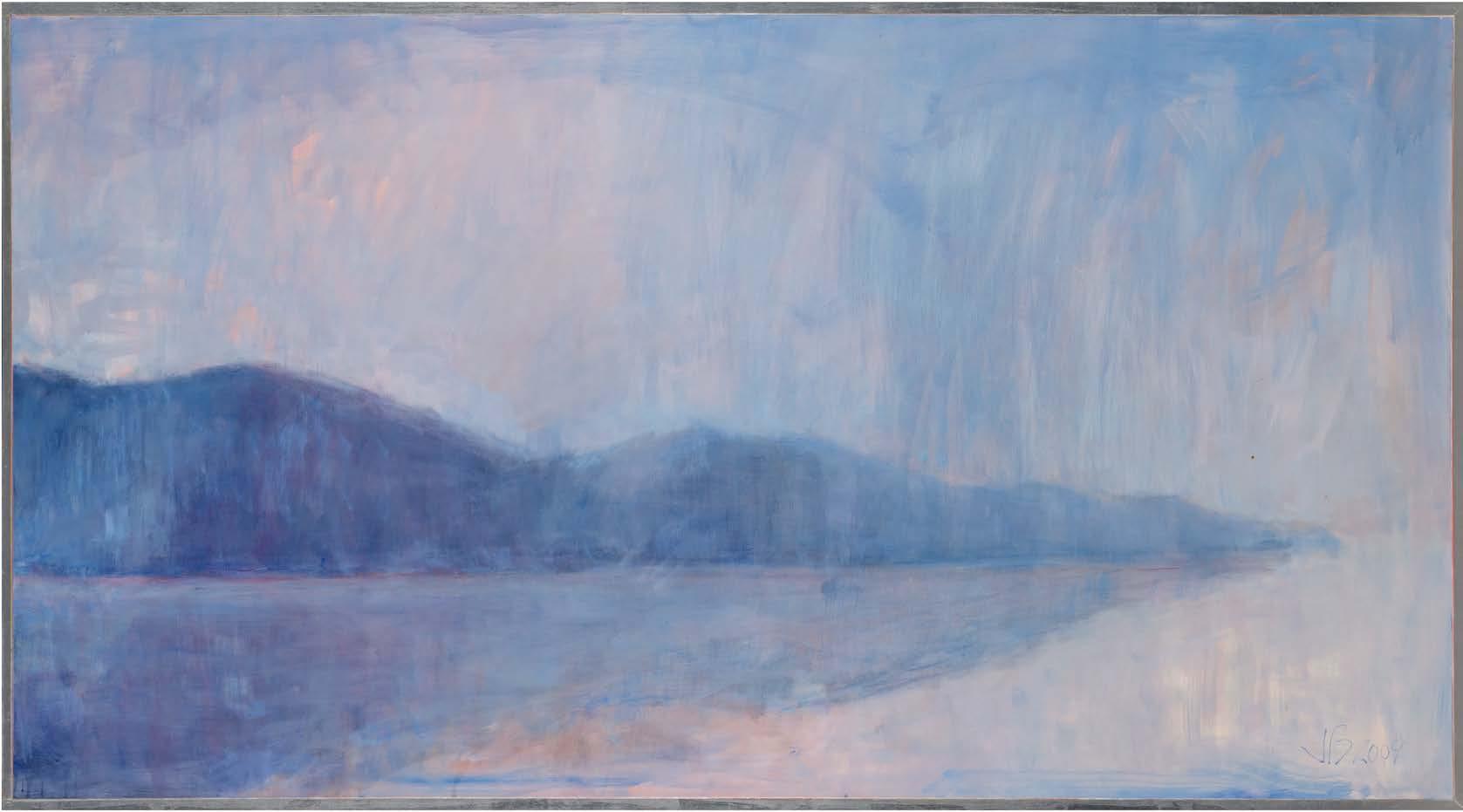
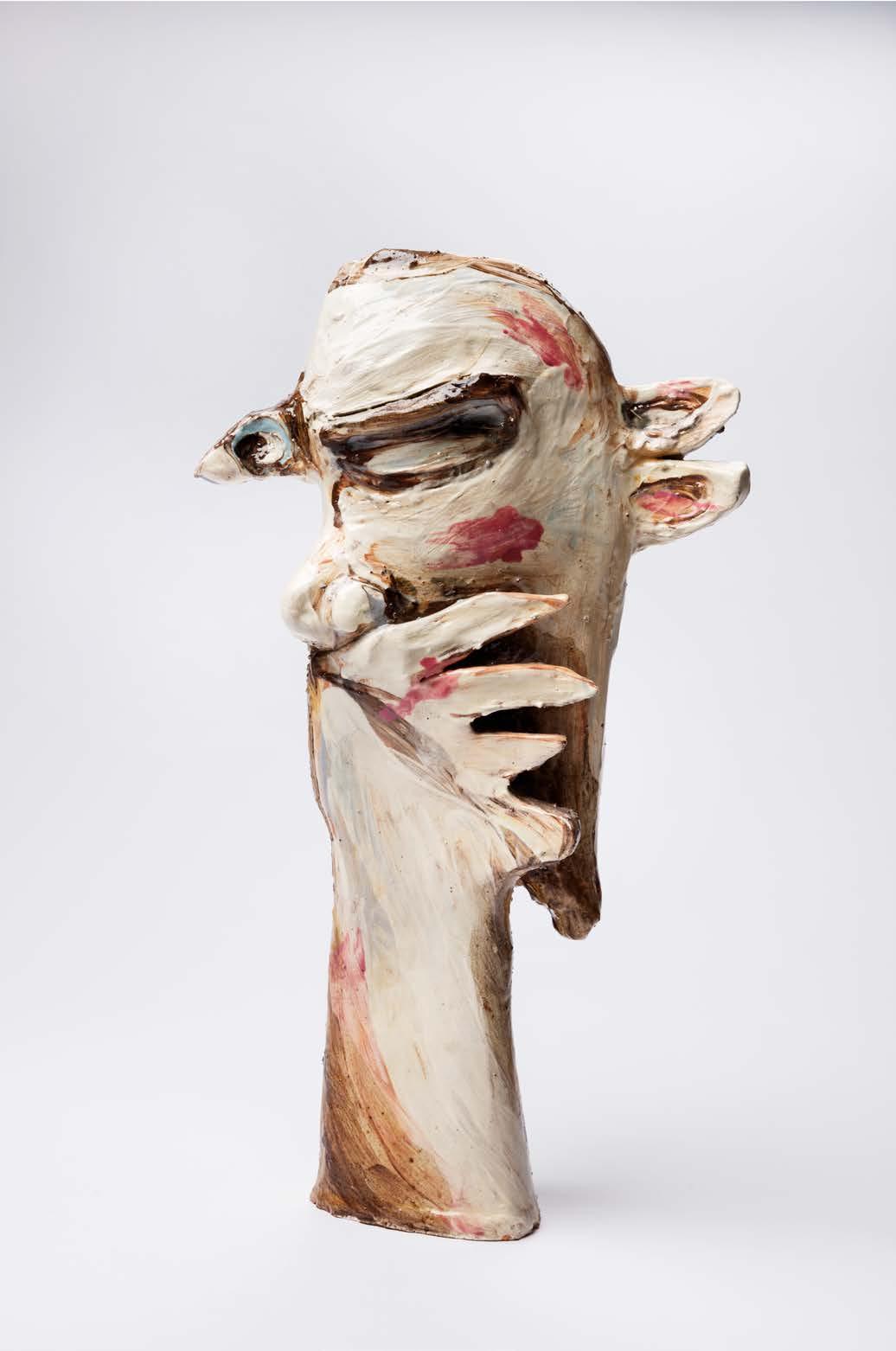
Robert Burton
b. 1954, Dalby, Queensland
Robert Burton is an established Queensland artist whose successful career spans three decades. His artwork reflects a mix of modernist genres, resulting in an eclectically loud and fast-paced style. In Burton’s case, his life really does imitate his eclectic art, with his list of professions including a welfare worker, fashion designer, sales assistant, art gallery manager, and ceramics teacher. Renowned for his ceramics of abstract human faces, birds, and animals portraying human qualities, Burton imagines fantastic beings with unique personalities. His works mirror the characteristics and emotions of human nature, teasing the viewer and encouraging us to look a little deeper at ourselves and the people we know.
Robert Burton
Ceramic Head I 1990
Glazed stoneware
50.5 x 28.5 x 13 cm
Purchased with the assistance of the VACB of the Australia Council 1995 City of Townsville Art Collection










